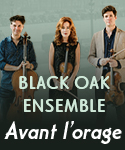Compared to Jordi Savall’s previous outings in this repertoire, listening to this new offering of ballet marches and dances composed and edited mostly by Philidor for the court of Louis XIII perplexes primarily because of the uncharacteristic regularity of the program. Unlike Savall’s last foray into French orchestral music (devoted to Lully) or in Tous les matins du monde (arguably his most popular recording), where we’re treated to a wide variety of differing instrumental combinations, scales, and temperaments, this moderately-paced, even-keeled, 65-minute procession never seems to end. Halfway into the program, as yet another expertly performed though rote opening drum roll by “Les Basses Continues et Percussions” begins, we realize that, while Louis and his court certainly must have been impressed by programs such as this, without the visual spectacle, fanfare, and pageantry that accompanied them most modern ears will find the presentation something of a trial.
Also unusual is the magnitude of the forces Savall employs–a battery of 58 instrumentalists. Even though it’s likely that Louis had this many at his disposal and even considering that they never all perform simultaneously here, rarely have so many seemed to make so little sound. This is certainly the most viscerally quiet orchestral recording Savall has ever made. That said, if you’re willing to listen in small doses there’s much to enjoy. The brief “Ma Mignone” Muzette, “Bourée D’avignonez”, “Les Suissesses”, and “Les Nimphes de la Grenouillere” movements feature stylishly witty instrumentation.
As usual, Savall elicits the support of many of today’s most accomplished early music performers, including Rolf Lislevand, Pedro Estevan, Marc Hantai, and Manfredo Kraemer; so while the music itself may be less than interesting, at least know that you’ll be hearing quintessential performances. Although the sessions originate from different venues during different years (1997 and 2001) the recorded sound is consistently excellent throughout. Alia Vox’s presentation is as exuberant as ever and Catherine Cessac’s notes are historically informative. Savall’s legion of admirers will need no encouragement; others may first want to investigate either of the two recordings mentioned above for a more refreshingly diverse French offering.
































